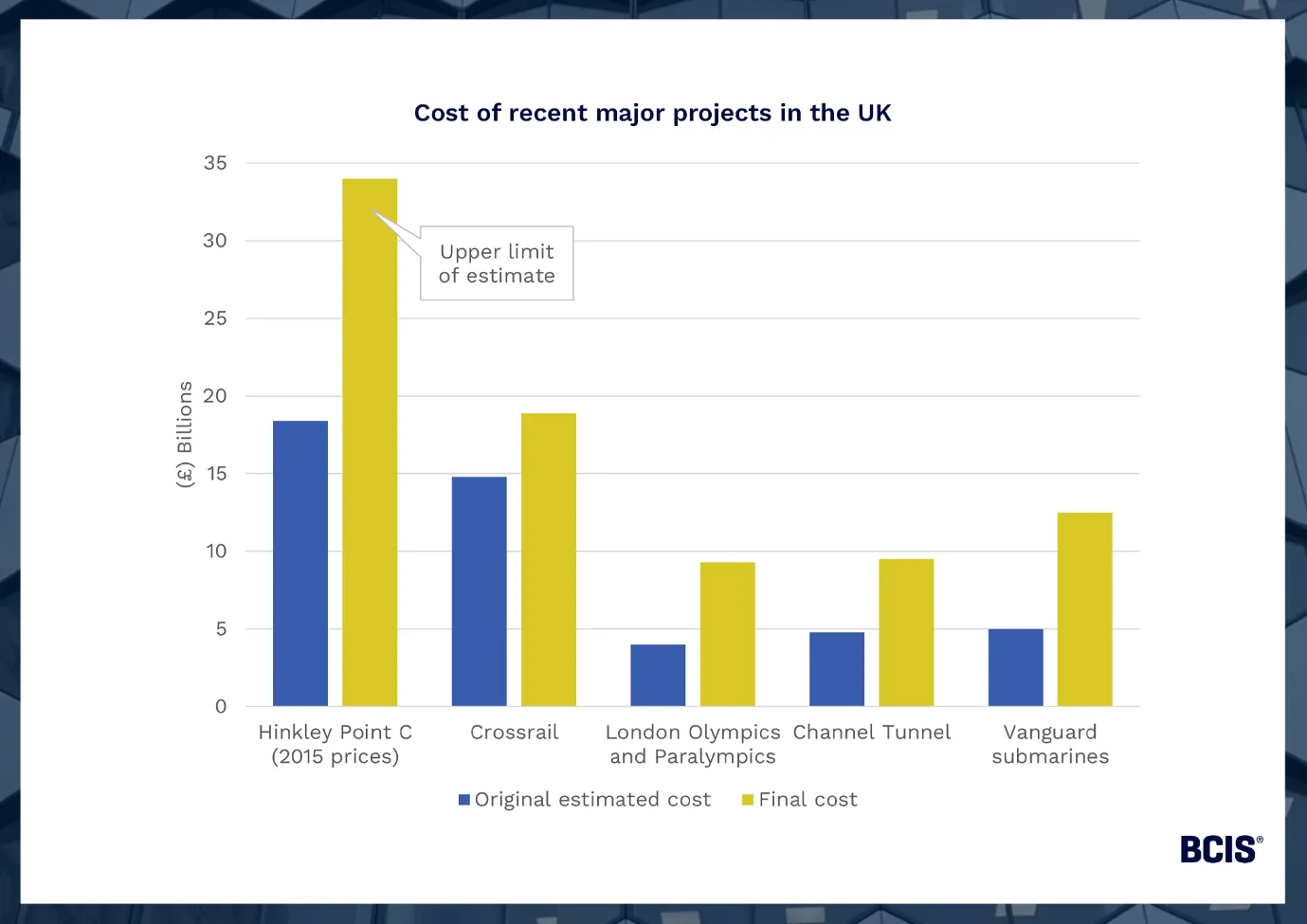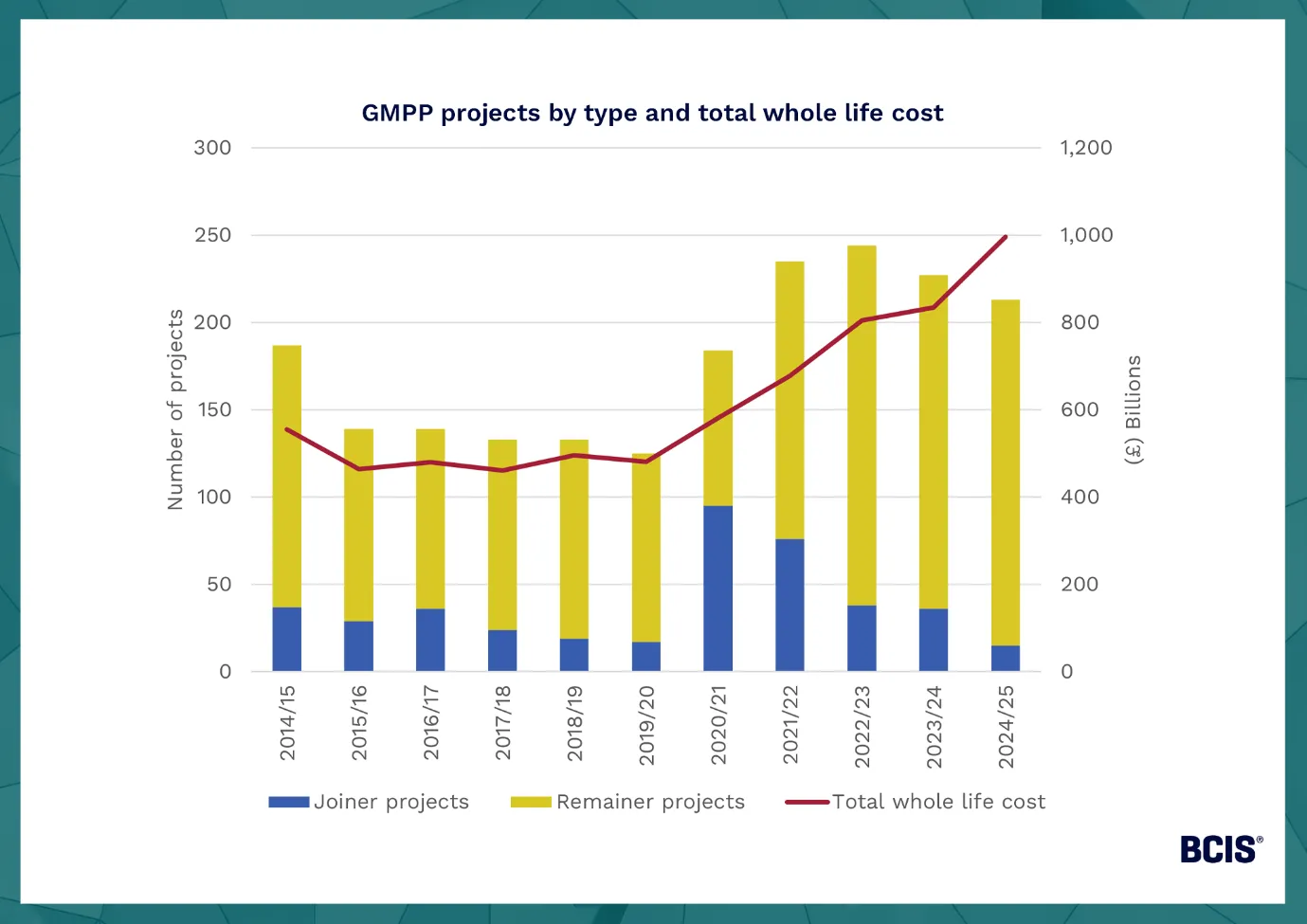It’s been over 100 days since the government published its 10-Year Infrastructure Strategy and progress appears to be slowly moving forward.

Karl Horton is the data services director of the Building Cost Information Service (BCIS)
Gatwick Airport’s second runway was the fourth major infrastructure project to get the green light in the government’s second year, following a record 21 decisions in its first.
However, in a challenging macroeconomic climate and considering the UK’s checkered history of delivering large-scale projects on time and within budget, due diligence and an evidence-based approach to project governance are more important than ever.
Infrastructure projects have long played an integral role in supporting economic and population growth globally, but emerging needs have increased their scale and frequency.
New drivers include demand for energy security and climate resilience, technological development, urbanisation and remaining economically attractive to investors in a competitive and fast-moving global landscape.
The catch is that building bigger often introduces greater complexity and higher financial and societal stakes.
Mace’s The Future of Major Programme Delivery report – a framework for improving delivery – estimates that 11% of global mega programmes and projects (those with a capital value exceeding $1bn) are at risk of significant delay.
By this logic, giga programmes and projects (those with a capital value exceeding $10bn and typically spanning 10 years or more) are even more susceptible – a reality that has been experienced on home soil more than once.
The UK is a global contender when it comes to big infrastructure – Mace data show the UK ranks fourth in the world for the number of mega projects announced between 2010 and 2025 and fifth for giga projects – but its track record of delivery suggests ambition and execution are often at odds.
For instance, Hinkley Point C is expected to complete in the late 2020s with an estimated final cost (in 2015 prices) of between £31 and £34bn. This would be several years after the planned finish date in 2023 and almost double the original estimated cost.

Source: Office for Value for Money (OVM) – Value for money study: governance and budgeting arrangements for mega projects
The UK’s convoluted planning system is the most notable stumbling block but the Planning and Infrastructure Bill, which will hopefully improve the flexibility of the NSIP (Nationally Significant Infrastructure Project) regime, should reduce hoop-jumping and streamline approvals.
Of course, delivery is not as simple as securing planning approval, and rooting out other barriers will require a considerable amount of collaborative effort.
Optimism bias in bigger projects seems to be a particular issue.
A literature analysis conducted as part of wider research published this year found that optimism bias, systematic underestimation, strategic misrepresentation and management complexity are the main culprits behind construction cost overruns across various mega projects globally.
Schemes like Hinkley Point C and the Gatwick expansion are incredibly complex, often with many levels of subcontractors, and it can be easy to underestimate the final cost, particularly where unexpected inflation or delays occur.
Pressure to secure investors with the promise of a return on investment (ROI) for less investment could be a contributing factor as much as overlooking cost risks.
The issue with bigger, higher-profile projects is that there’s no going back once the estimated final cost is common knowledge.
It’s the figure stakeholders get publicly hit with when costs climb and the original estimate becomes obsolete.
So, what’s the solution?
While there’s no one-size-fits-all answer, benchmarking with as much relevant internal and external project data as possible throughout the project’s life cycle, is one of the best ways to drive better project performance.
If all else fails, which in the current economic and labour climates is possible, challenging the estimated final cost and grounding it in real-world, comparable project data is the best chance of hitting the mark financially.
Ideally, this will involve plotting the reasons for cost movement in benchmarked projects (i.e. scope creep, change in client preferences) as part of risk analysis to build contingency into the final cost of the focus project.
Part of the challenge with one-off mega and giga projects is finding comparable data to benchmark against.
Promisingly, the government’s infrastructure drive means more relevant project data is becoming available.
The National Infrastructure Strategy and Transformation Agency’s (Nista’s) latest annual report on the Government Major Projects Portfolio (GMPP) revealed the whole life cost of the portfolio continues to rise, despite a reduction in the number of projects – a reflection of several large, high-cost projects joining the GMPP.

Source: Nista Annual Report 2024/25
Due diligence is equally integral to making big infrastructure a success.
It might be obvious but, with so much on the line, transparent communication and record-keeping across the supply chain, particularly as the project’s scope and/or design evolve, helps to reduce disruptive risks such as contract disputes, procurement issues and delays on site.
With skills shortages still undermining construction activity, reinforcing capacity with direct employment for larger, longer projects is, where feasible, a safer bet.
The high cost of employment makes this more challenging but there’s a lot to be said for developing a long-term workforce for mega and giga projects.
The Thames Tideway tunnel is a good example; the £5bn scheme was close to the estimated final cost and became operational within months of the original completion date.
The project’s success can be attributed in part to the full-time employment of around 25,000 workers and, according to the director of UCL’s Megaproject Delivery Centre, the development of a vision and culture.
The mobility of the UK’s construction workforce has historically been a strength, but poor supply availability and the knock-on impact of this – almost all (95%) of Levelling Up Fund projects reviewed in the latest MHCLG evaluation reported delays – mean something must change.
With a £725bn infrastructure pipeline and experience handling bigger builds, the UK has great potential to set the precedent for delivering major schemes.
It comes down to learning from the past, basing decisions in credible data over ambition and a government-sector collaboration to reinforce longer-term labour supply.
Like what you’ve read? To receive New Civil Engineer’s daily and weekly newsletters click here.


